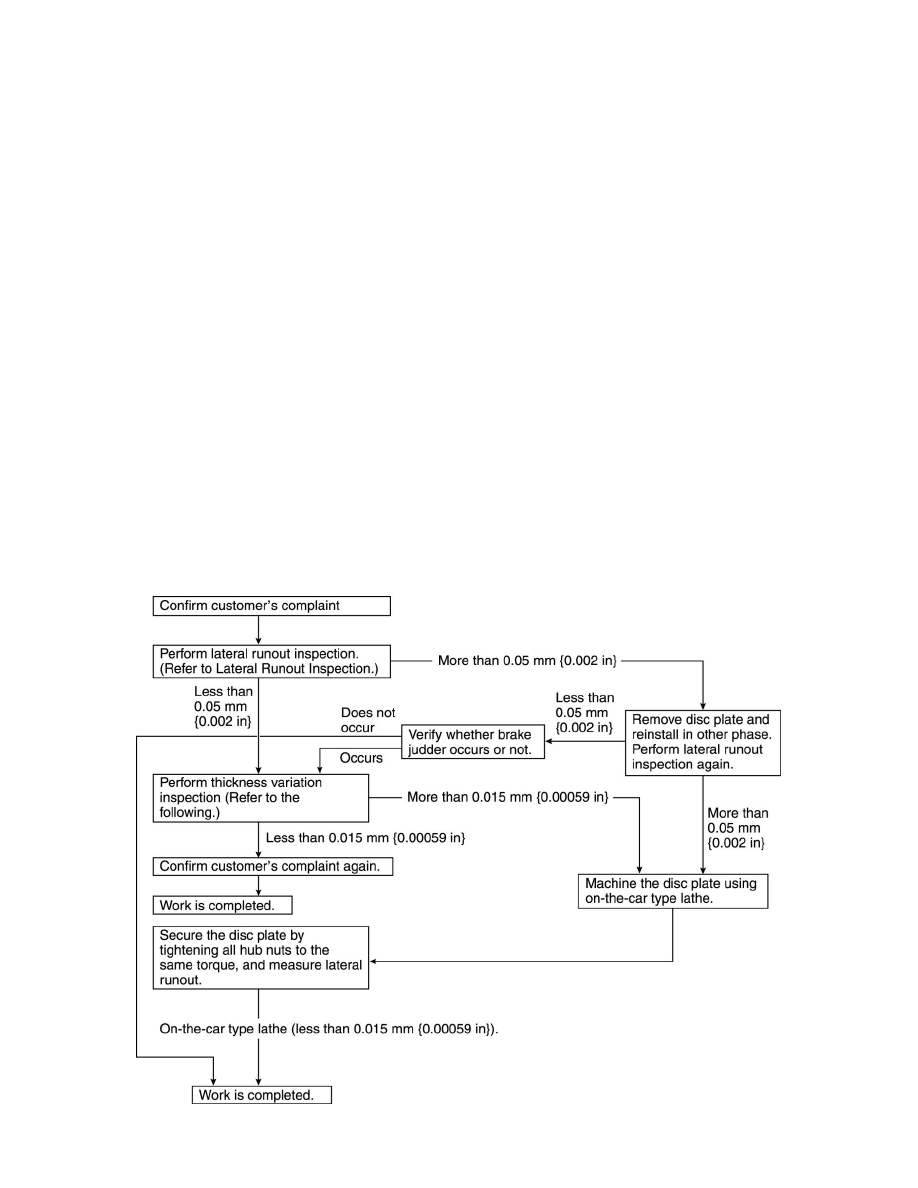6 L4-2.5L (2010)

Brake Rotor/Disc: Testing and Inspection
Front Brake (Disc) Inspection
FRONT BRAKE (DISC) INSPECTION
Description
-
Steering wheel vibrates in the rotation direction. This characteristic is most noticeable when applying brakes at a vehicle speed of 100-140 km/h
{62.2-86.9 mph}.
-
When applying the brakes, the vehicle body shakes back and forth. The seriousness of the shaking is not influenced by vehicle speed.
-
When applying brakes, a pulsating force tries to push the brake pad back. The pulsation is transmitted to the brake pedal.
Brake Judder Repair Hints
Due to an excessive runout (side-to-side wobble) of the disc plate, the thickness of the disc plate is uneven.
-
If the runout is more than 0.05 mm {0.002 in} at the position 10 mm {0.39 in} from the disc plate edge, uneven wear occurs on the disc plate
because the pad contacts the plate unevenly.
-
If the runout is less than 0.05 mm {0.002 in}, uneven wear does not occur.
The disc plate is deformed by heat.
-
Repeated panic braking may raise the temperature in some portions of disc plate by approximately 1,000 °C {1,832 °F}. This results in a
deformed disc plate.
Due to corrosion, the thickness and friction coefficient of disc plate change.
-
If a vehicle is parked in damp conditions for a long time, corrosion occurs on the friction surface of disc plate.
-
The thickness of corrosion is uneven and sometimes appears like a wave pattern, which changes the friction coefficient and causes a reaction force.
Inspection and repair procedure
Lateral runout inspection
